जयपुर
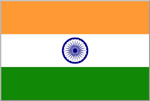
The pink city in the deserts of Rajasthan

Jaipur is the capital of the Indian state of Rajasthan, the largest state in the country which is mostly occupied by the vast Thar Desert. It was founded relatively recently in 1727, and together with the capital and Agra it makes up the Golden Triangle, the most popular tourist circuit in north India. It has quite a different feel from the other two cities, and a host of attractions making it a worthy location to spend a few days.
Jaipur was easily my favourite place in India, as it was what I had imagined the country to be like – to me it was classic India. We rented a car and driver from Agra, which was invaluable around the Jaipur area to reach such places as the Amber Fort and Jaigarh. We stayed for two nights at the excellent value and peaceful Hotel Arya Niwas on the edge of the Pink City. As this billet was booked by me, it was a step up in accommodation from our previous lodgings in Delhi, with a proper toilet and shower, not to mention a quiet private garden away from the noise of the city.
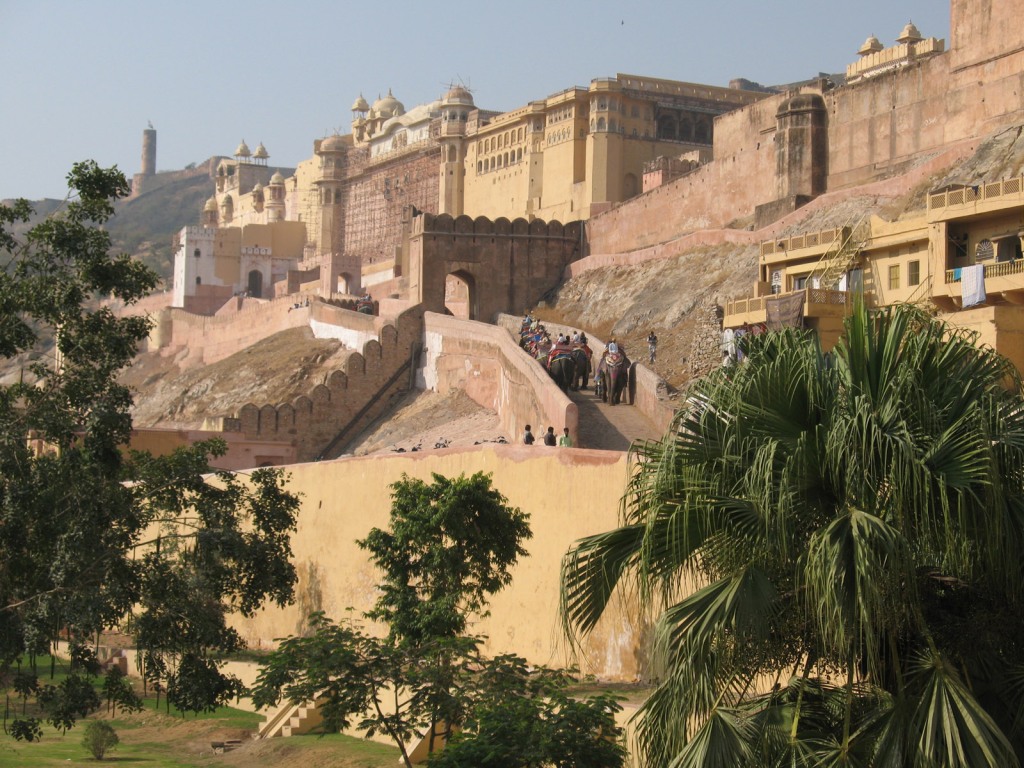
Like Indiana Jones’s Temple of Doom, the Amber Fort rises forbiddingly above the surrounding landscape. You can walk up the dusty path, or succumb to the hassling of the touts and arrive by elephant. Since becoming more aware of the treatment of elephants in south Asia, I would not repeat this experience.
A local restoration worker sensibly makes the climb on foot.
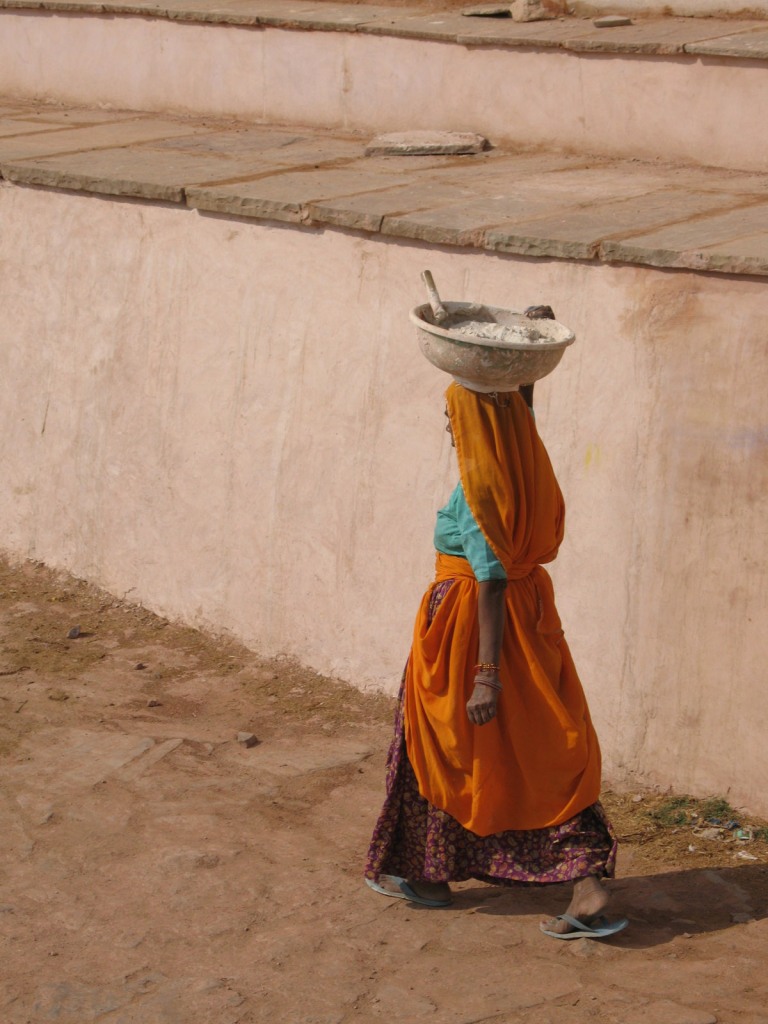
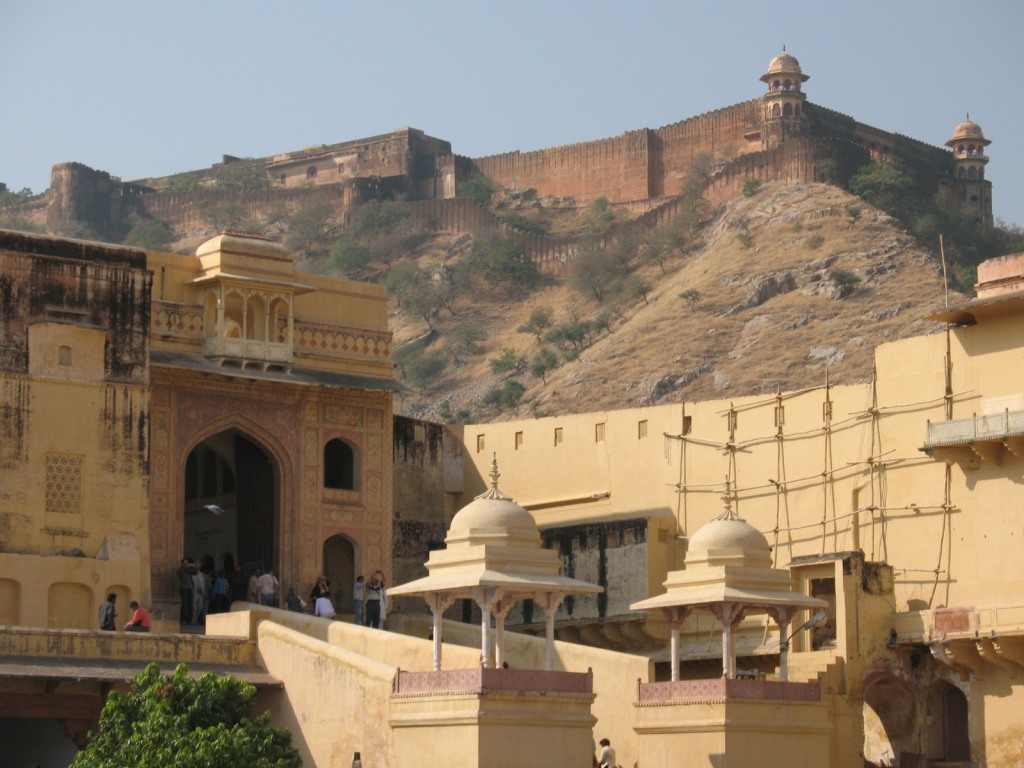
The Amber (or Amer) Fort was founded in 1592 as the home of the Rajput Maharajas. Immediately above the Amber Fort, the walls of Jaigarh, itself a separate fortification, stare down.
Colourfully dressed women sit listening to the background music at the Diwan-e-Aam, the Hall of Public Audience.
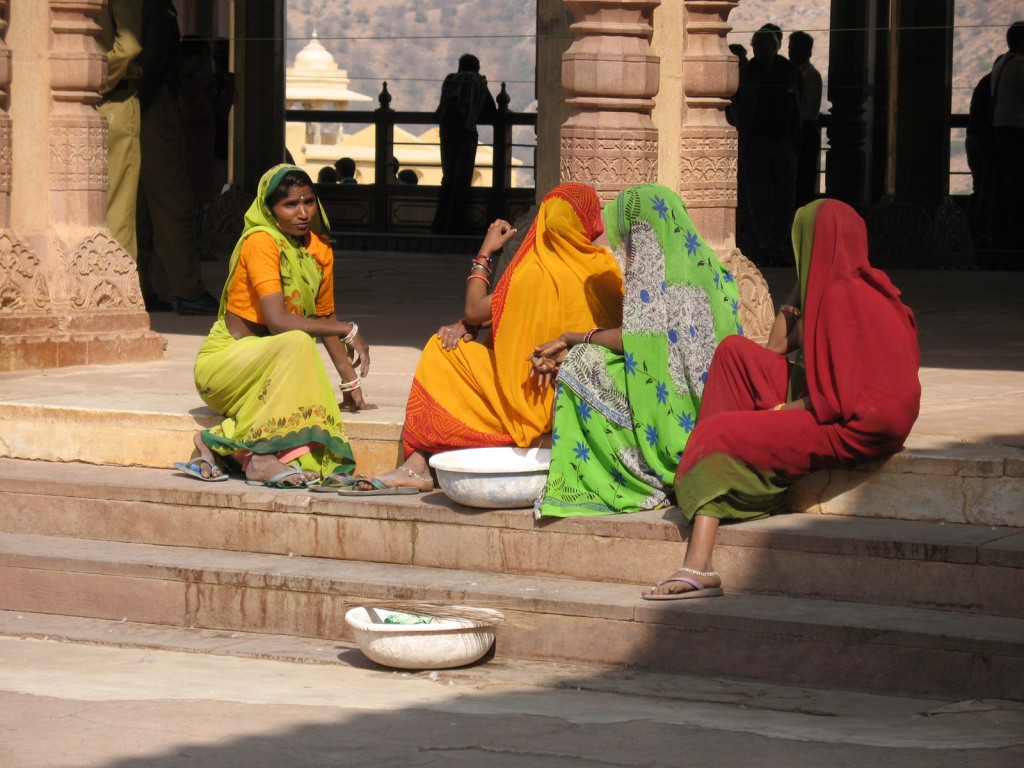
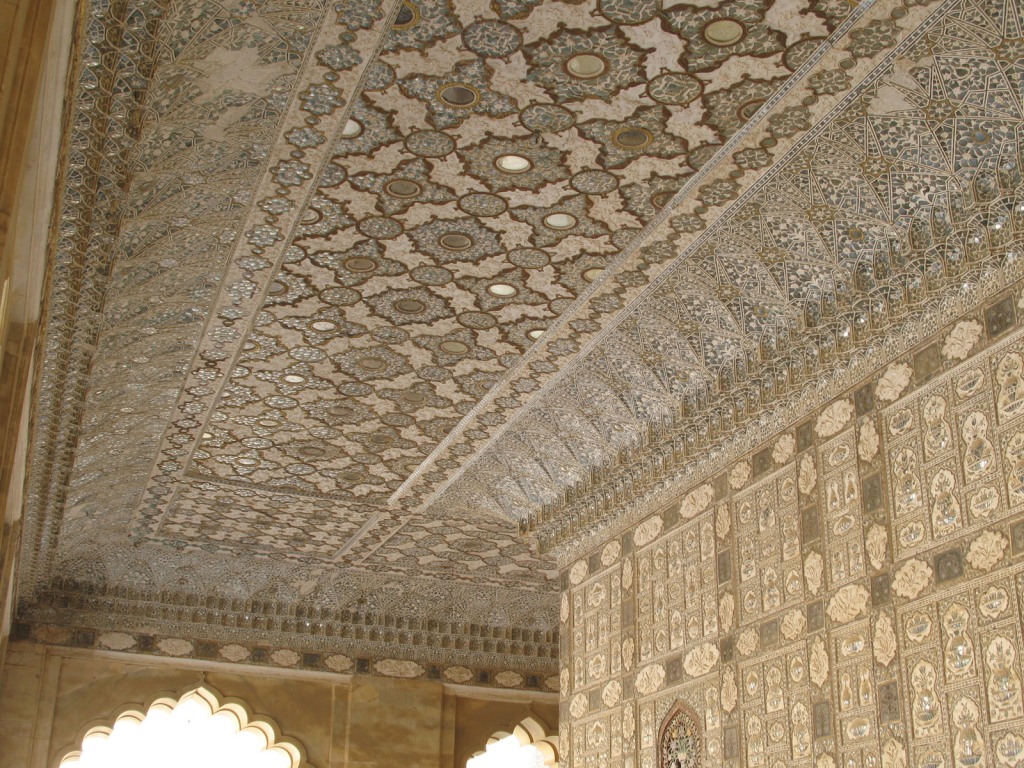
The Sheesh Mahal or Palace of Mirrors is appropriately adorned with thousands of tiny mirrors on its ceiling. It was completed in 1727 and had been recently restored at the time of my 2007 visit.
There was some excellent music going on, and this kid was getting right into it.


The garden area in front of Sheesh Mahal, with its geometric flowerbeds design. There was clearly some rework going on as the pond was dry, and the beds unplanted – it is normally a much greener space.
The oldest and most inner courtyard is the Palace of Man Singh, the zenana or harem within which the king would wander at night and take his pick. The central baradari pavilion was originally curtained for privacy.
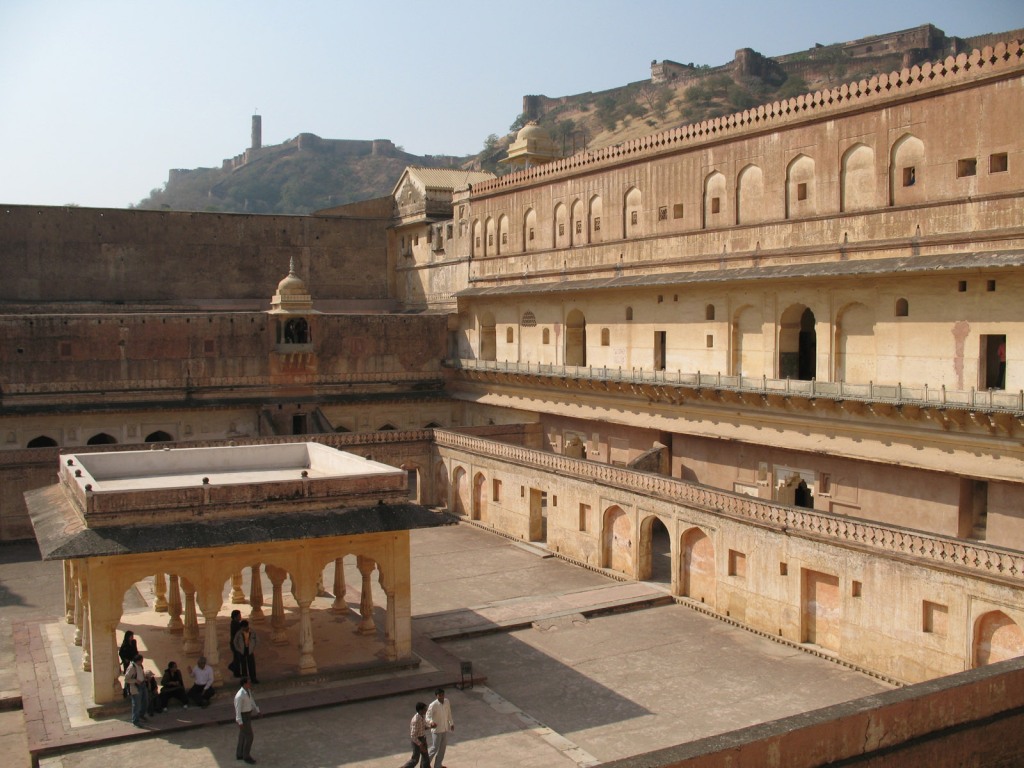
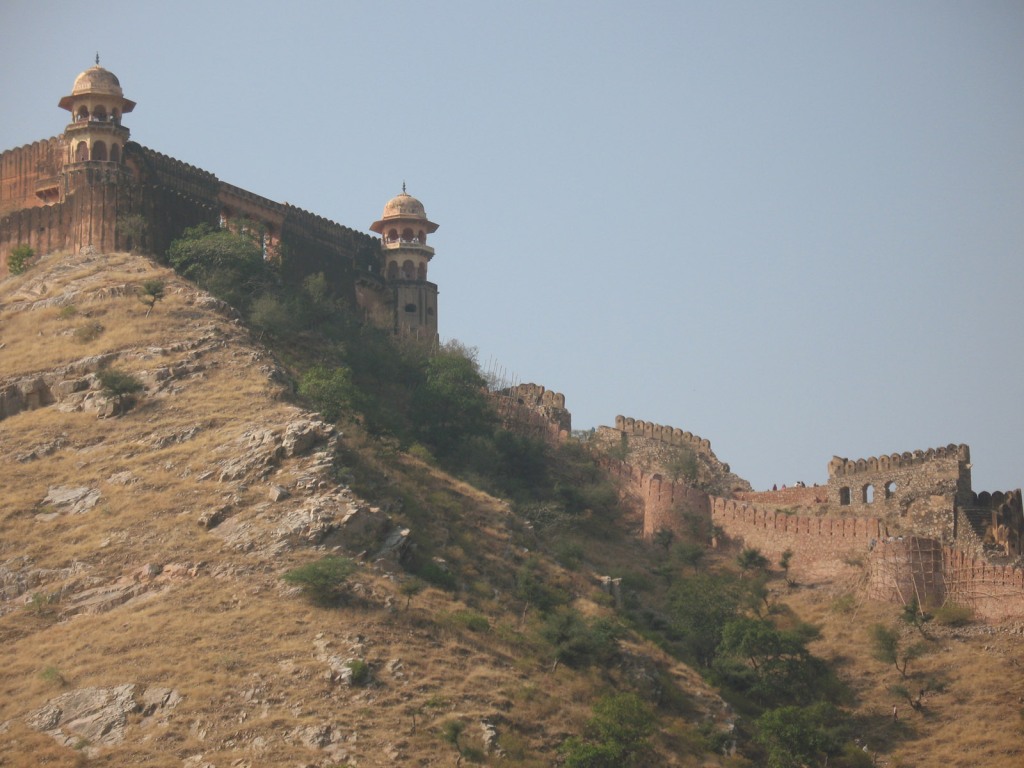
The walls of Jaigarh fort crown the nearby hilltops. It is newer than the Amber Fort and dates from 1726, but both are connected by tunnels for ease of clandestine transit.
Up at the entrance to Jaigarh Fort, there were plenty of monkeys for our entertainment, but don’t get too close! I’m no expert at monkeying around, but I believe these are Langur monkeys, different to those found in Delhi and distinguished by their black faces.
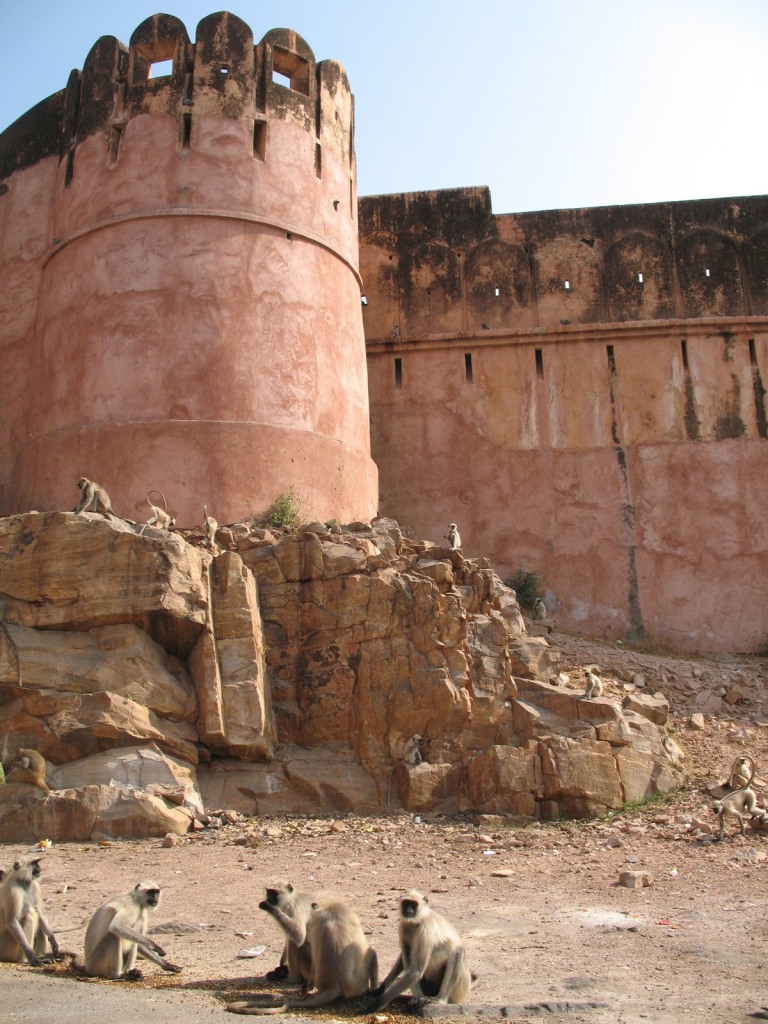
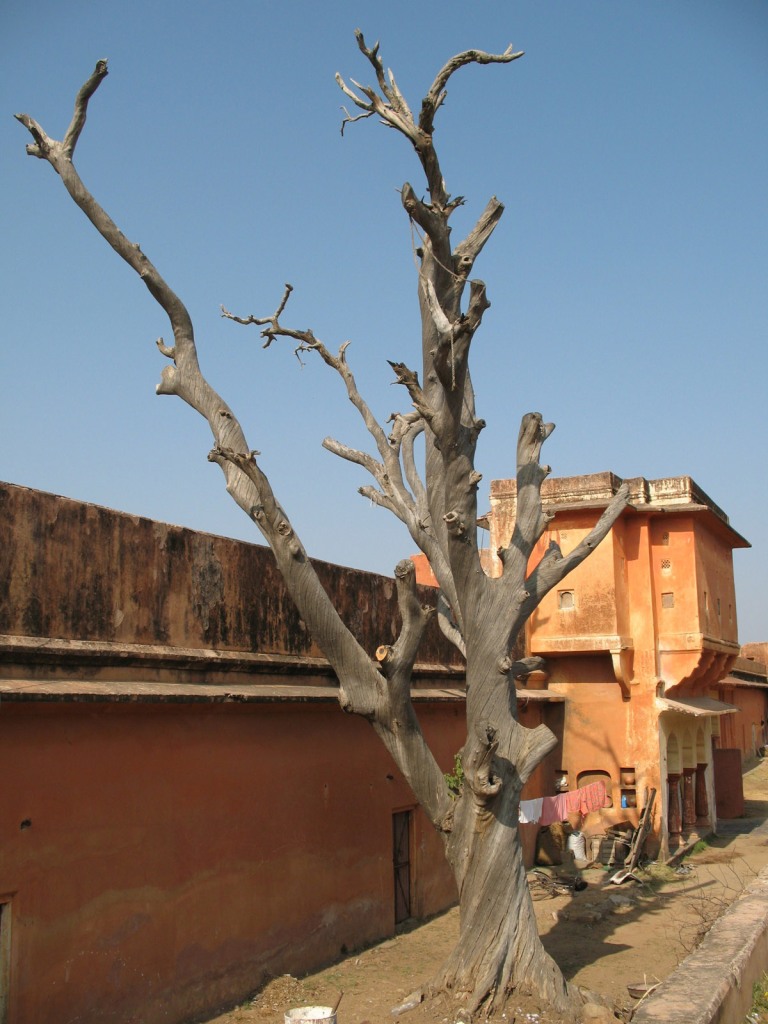
Even inside the fort, laundry needs to be done and hung out to dry. I like this desiccated desert tree, similar to those seen in Namibia.
It’s not just monkeys you need to be aware of though, there were camels to watch out for too.
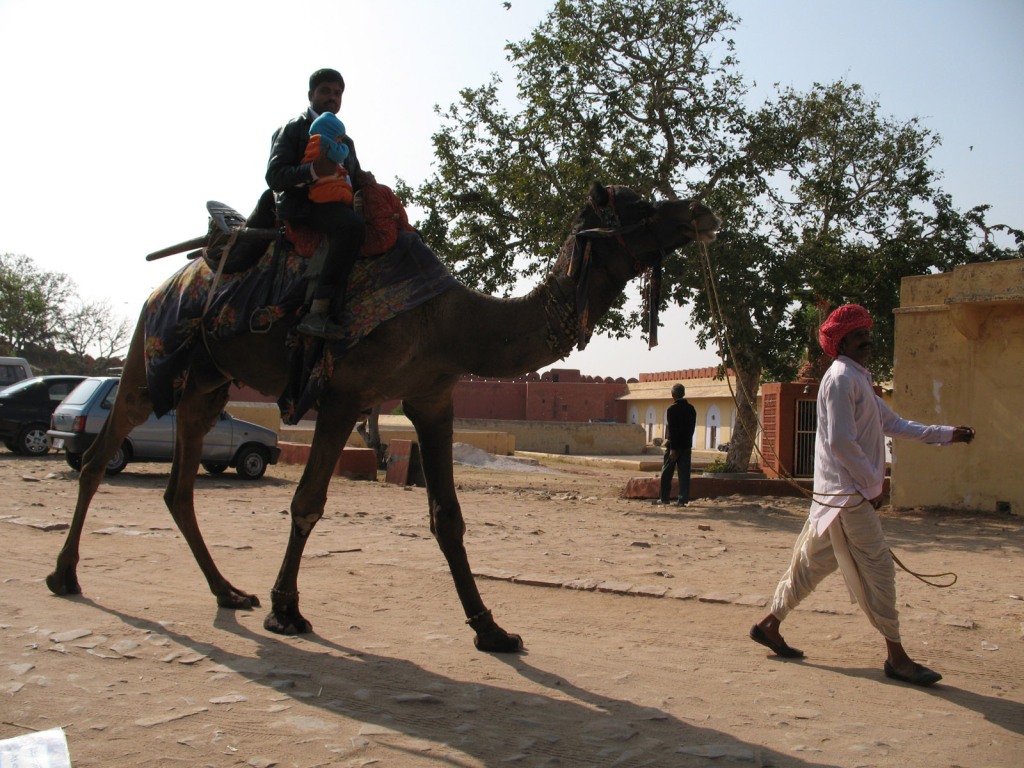

In this part of the country water is very scarce, and preserved by way of step wells such as this. Designed so that you can reach the water when it’s at various levels, this one seems impractically steep but is conversely practically dry. A monkey keeps guard at the top.
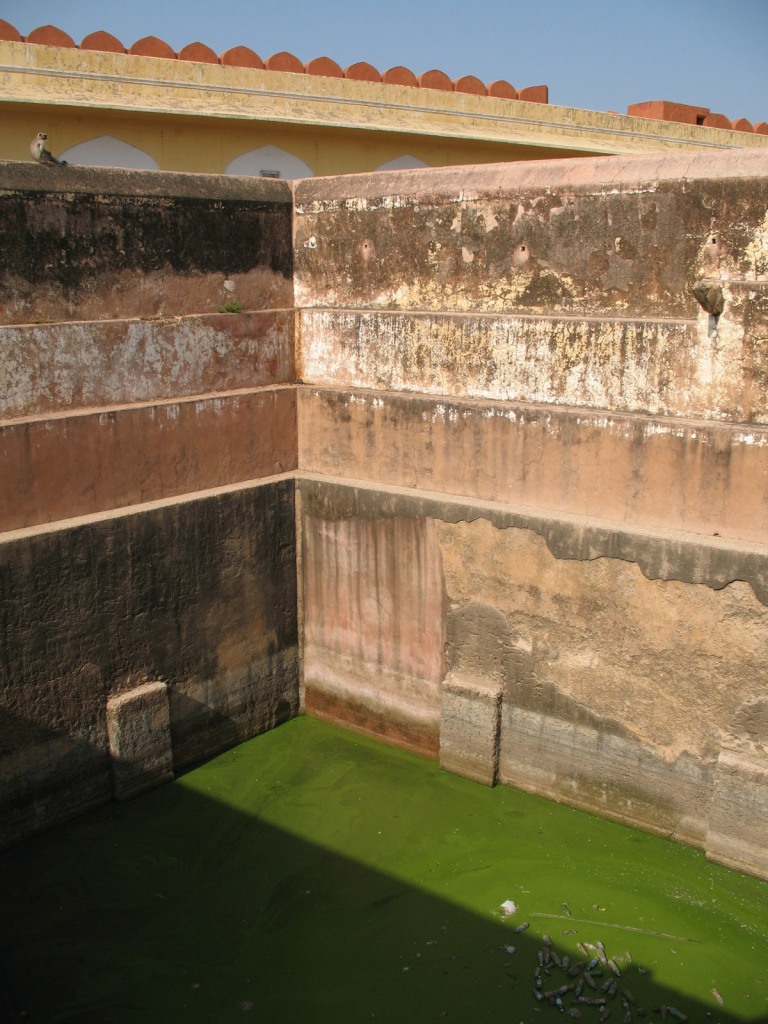

Looking back down to the Amber Fort and Maota Lake, over the various walls snaking their way across the hills, like a Great Wall of China on a much smaller scale.
Back in Jaipur city, Hawa Mahal (the Palace of the Winds) must be one of the most photographed buildings in India. Part of the old “Pink City” of Jaipur, it was built in 1799 so that nobles ladies could observe street life without being themselves observed. It had been freshly renovated at the time of our visit.
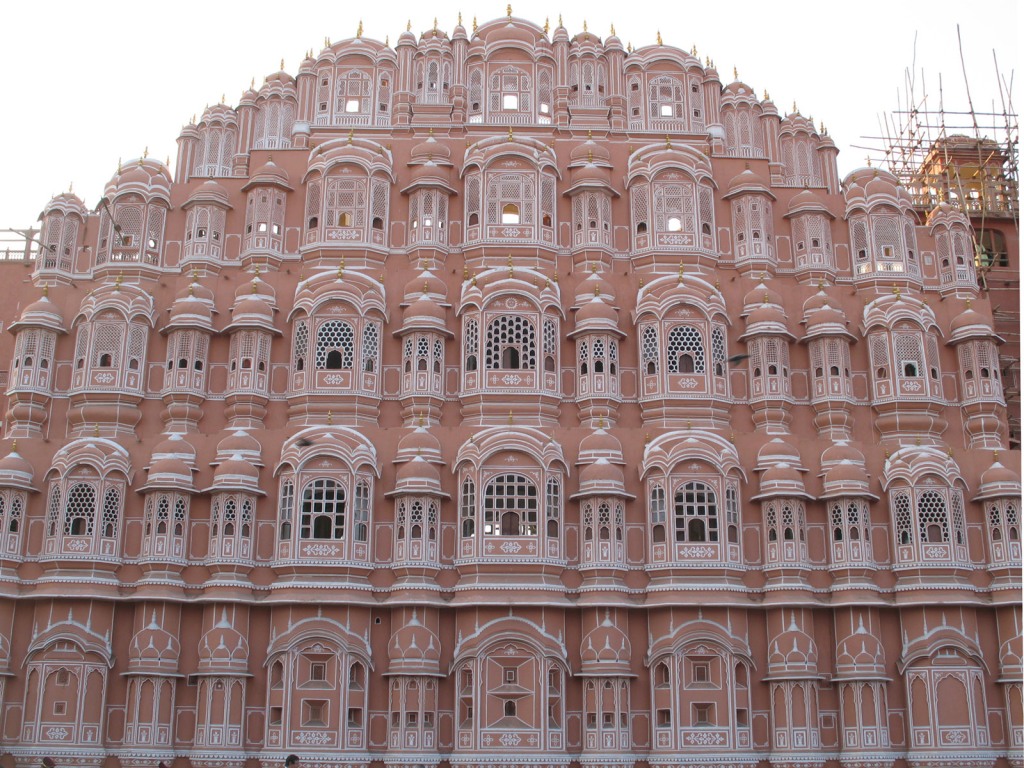
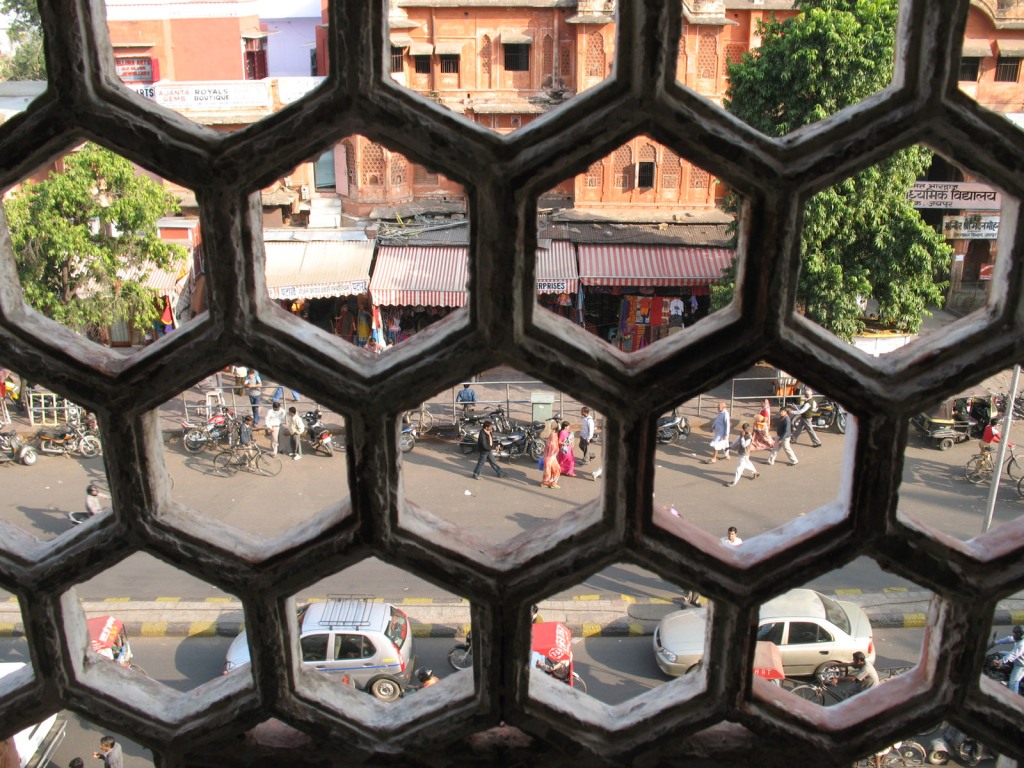
Looking out at the street life from the honeycomb palace windows, known as Jharokhas.
Inside the palace and just behind the façade. There wasn’t a whole lot to see inside, but it was worth the climb to the roof.
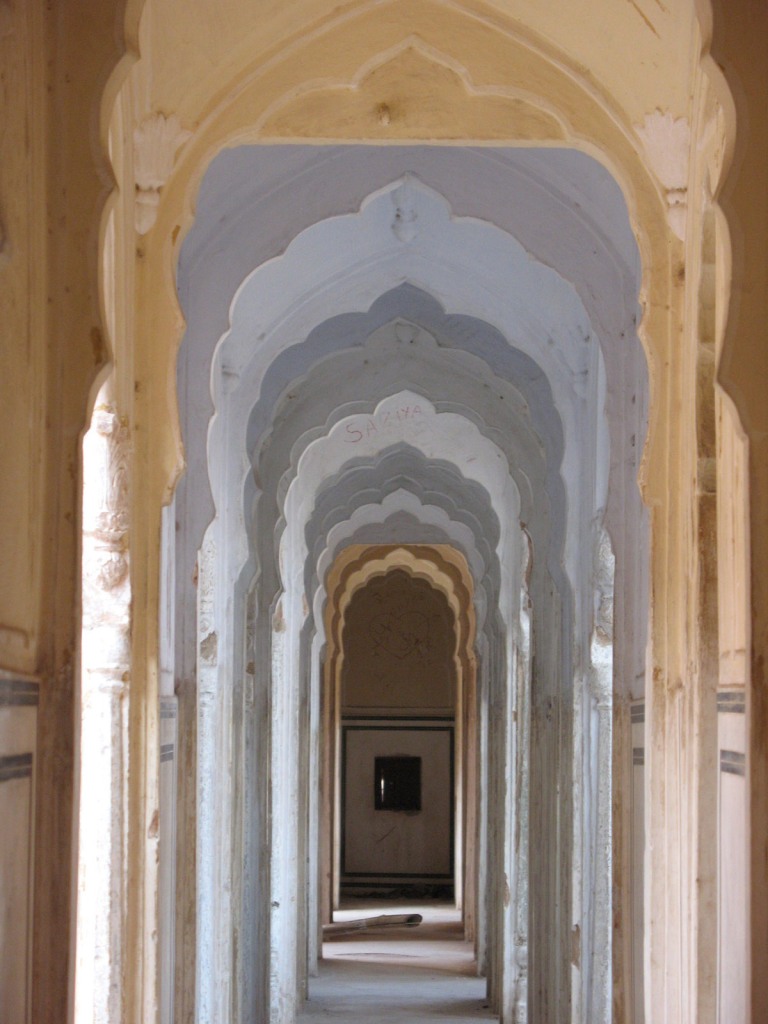
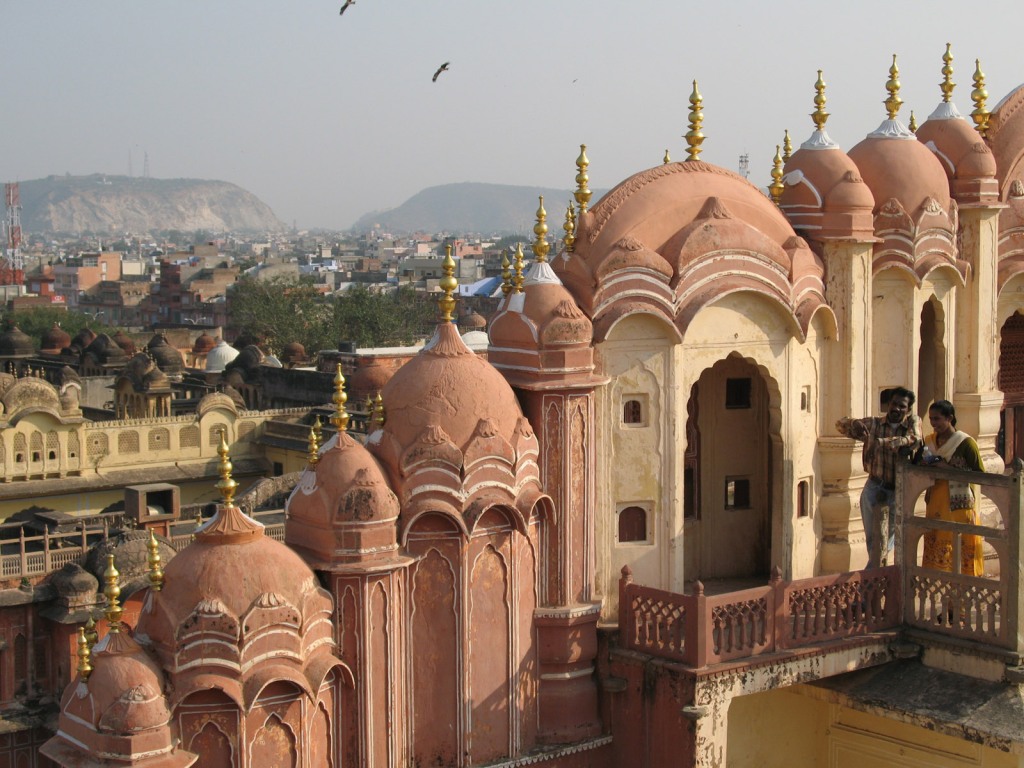
From the roof of the Palace of the Winds, the views across Jaipur were spectacular. The colouring of the palace is very much in keeping with the stone used throughout the old Pink City.
Facing the opposite direction, Jantar Mantar is a collection of astronomical observation tools, and literally translates as Instrument of Calculation. It was used for measuring time, tracking the movement of stars, and predicting eclipses, amongst other functions. The prominent ramp is the Virhat Samrat Yantra, the world’s largest sundial.

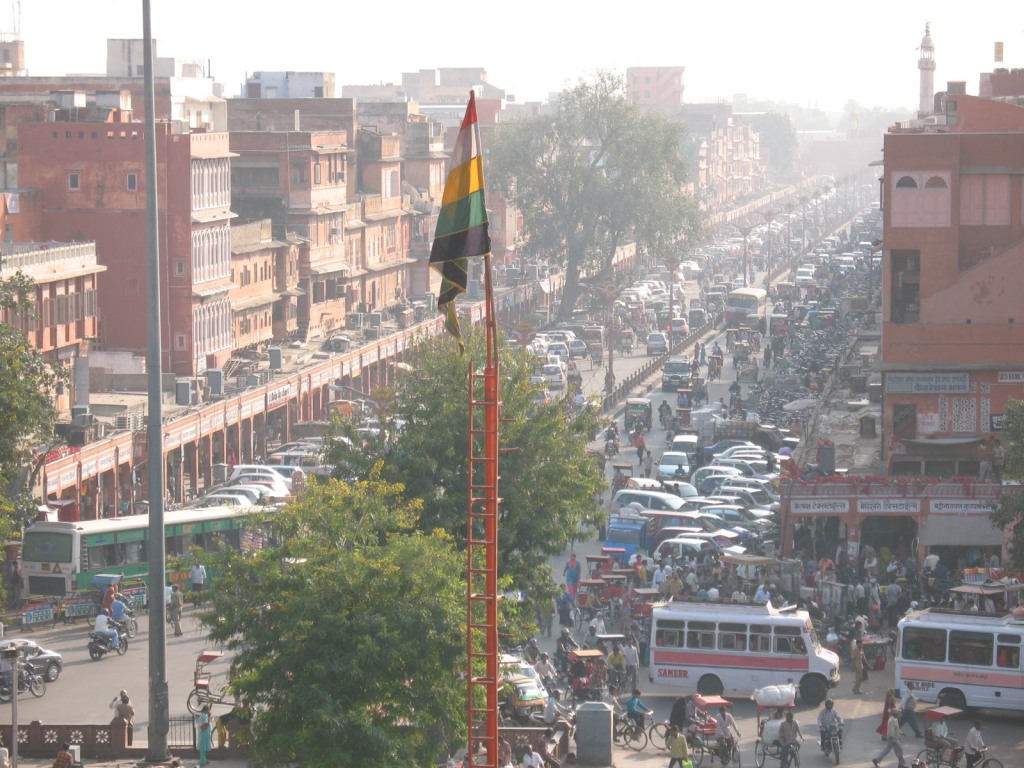
A view down Johari Bazar Road, one of Jaipur’s main streets in the Pink City, heading off into the haze.
The Pink City wasn’t always this rosy shade – many of the buildings were painted pink in 1876 for the visit of the future Edward VII, while his mum Victoria was still running the British Empire. The colour scheme proved popular, and remains today.
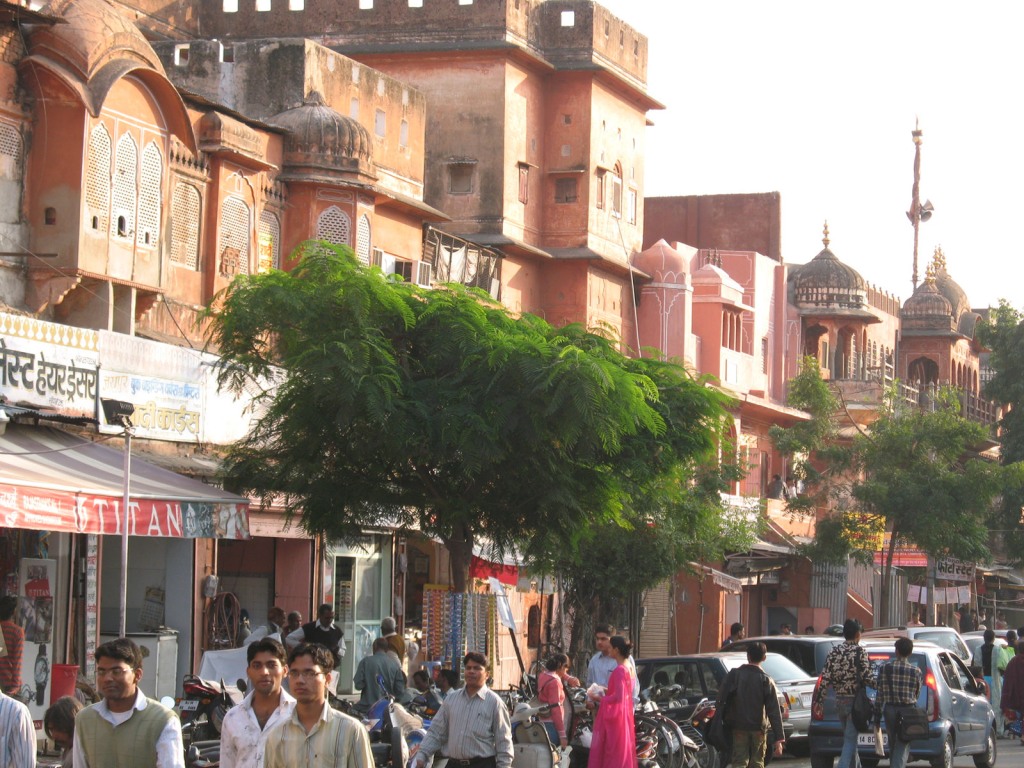
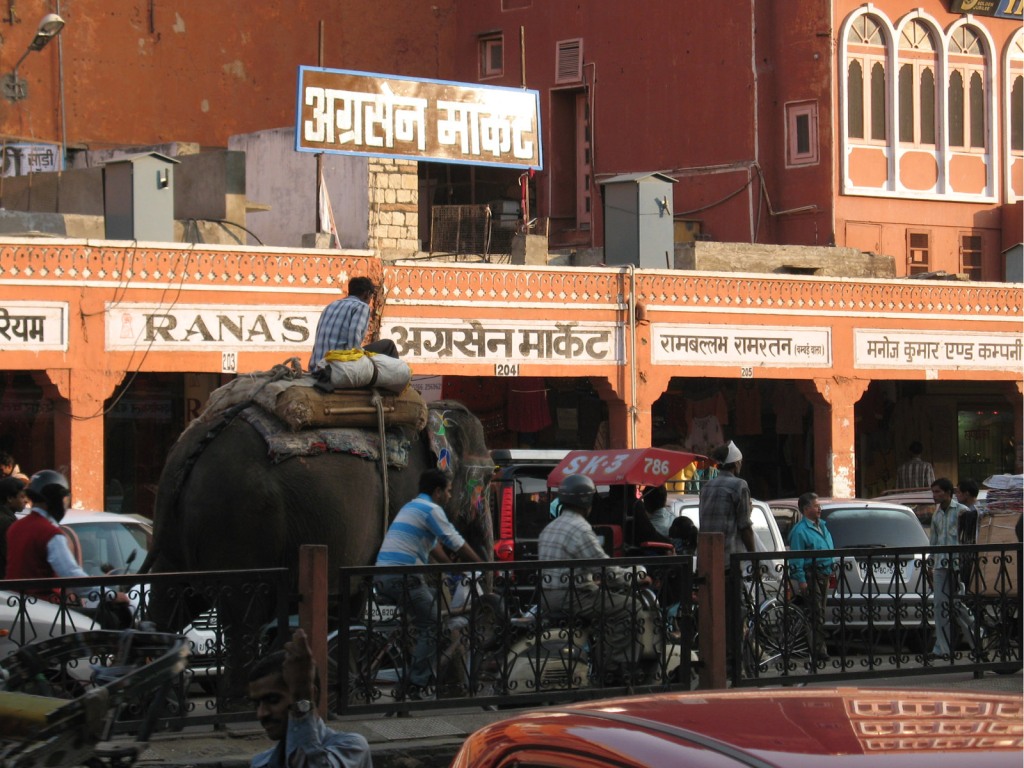
Something you don’t often get stuck behind in UK traffic, a fully grown elephant heading through the centre of town. We also spotted the occasional camel wending its way through the throng.
Back outside the city, we stopped at the shore of Man Sagar Lake, an artificial reservoir but an extremely old one, being formed by a dam built in 1610. The walls of the Amber Fort area rise above the temple of Sri Sri Radha Madhav Ji.
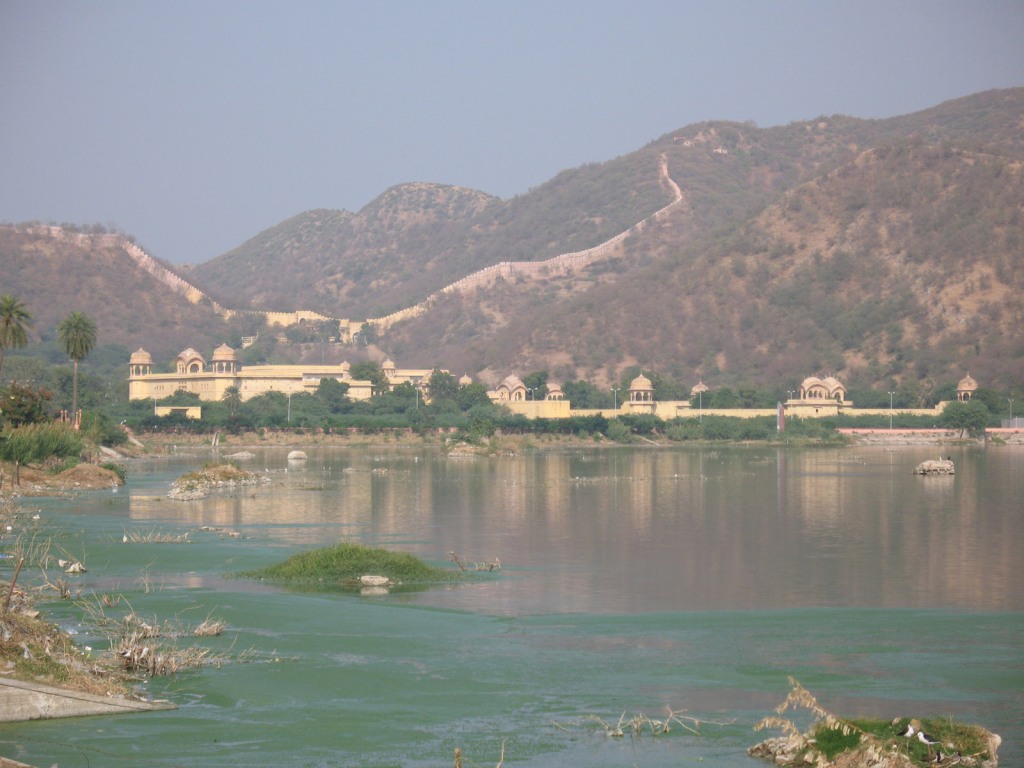
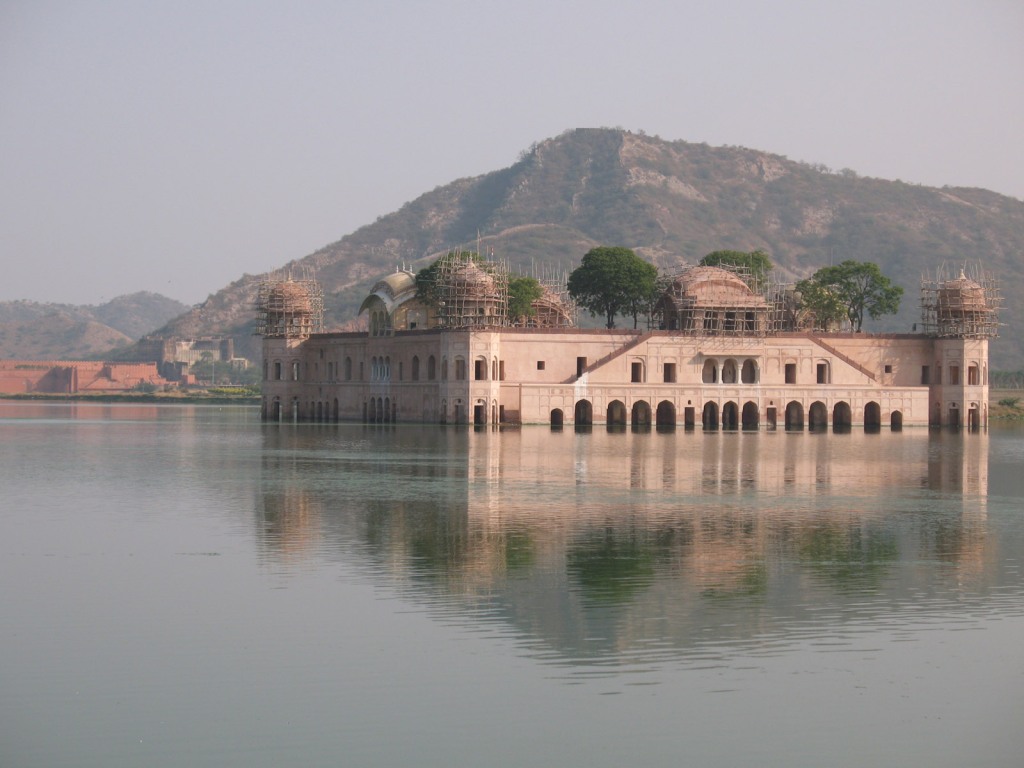
Man Sagar lake is not especially deep, making it the perfect host to the floating palace, Jal Mahal. It was built in 1699, many decades after the lake itself formed, but hopefully they temporarily drained it to aid construction. The red wall in the background is the dam which maintains the lake.
Created 2008 | Updated 2023
